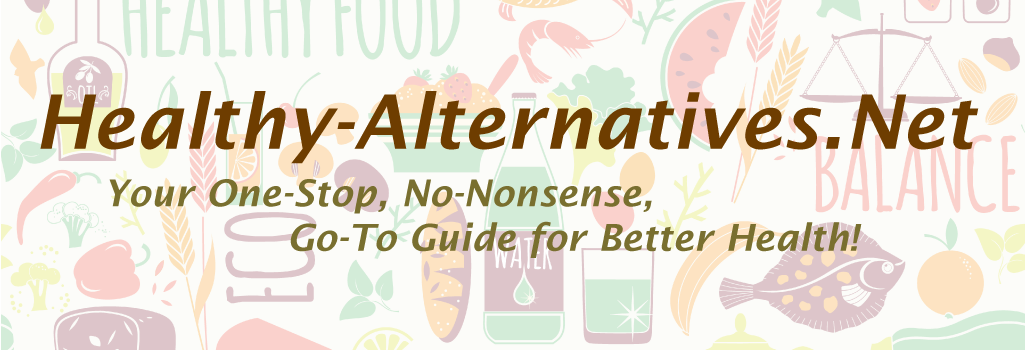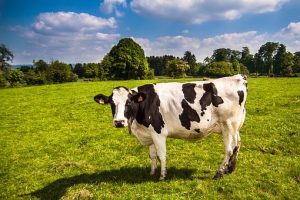Milk; including ice cream, sour cream, cheese, yogurt, cottage cheese, kefir etc…
What’s wrong with cow’s milk?
Cow’s milk was meant for calves. Calves have a special enzyme to digest the alkaline milk which then disappears at weaning time. The Pituitary hormone enables the calf to go from its 100 lb birth weight to 1,000 lbs at the end of weaning. When consumed by humans, this hormone disturbs the entire endocrine system, producing excess fat and stimulating the growth of abnormal cells. Casein, which makes up 87% of cow’s milk protein, has been proven to promote and increase cancer growth. More and more people experience Lactose intolerance. It just wasn’t designed for the human body to ingest.
Haven’t humans always drank cow’s milk?
That’s an interesting question! If mankind has been drinking milk forever, then why do we consider it to be such a problem now? For a really interesting explanation about the domesticated cow and the development of the dairy industry, click Why was the first cow milked in the first place?
So what does breast milk do for a newborn child?
Human babies have rennin to digest the acidic breast milk which also disappears at weaning time (age two). If you can, feed your newborn breast milk as it delivers potential probiotics and inoculates the infant’s gut. Probiotics are superior to antibiotics to improve symptoms of mastitis (infection of breast tissue). See Pregnancy & Newborns for more info.
But don’t we all need calcium?
Calcium must be in an acid medium for assimilation into the intestinal wall. People who consume the most cow’s milk have the lowest levels of calcium. So where’s the best sources of calcium? Vegetables, Beans, Seaweeds, Nuts & Seeds all contain more calcium per 100gr than cow’s milk AND actually do get absorbed into our bodies. See “Calcium” for more details.
But I really like drinking cow’s milk!
Although foreign chemicals like antibiotics, growth hormones and feed additives used for beef production are prohibited in dairy cows, North American dairy products are nevertheless adulterated by petrochemicals, pesticides, GMO’s, pasteurization and homogenization that remove all nutrition and good bacteria. Interestingly, some North Americans who have consumed dairy products in Europe do not suffer from the negative side-effects that they experience in America because there, they are organic and raw.
How does the industry function to produce endless supplies of cow’s milk?
Just like the cows used for beef production, the life of a dairy cow is also a very cruel and sad experience. Cows were not created to be endless milk-making machines. They are artificially inseminated to give birth to a calf which triggers the milk-producing process. The newborn calf is then ripped away from its mother so that the milk can be sold to you. This is a very traumatic experience for both mother & calf. Male calves are slaughtered at a young age for veal while female calves become the next generation of milk-making machines. The normal 25 year lifespan of a cow becomes only 4 or 5 years when she can no longer produce milk and is sent to the slaughterhouse.
If you’re interested to hear the truth about dairy farms and the lives of its cows and calves:
What can I do to make a difference?
Choosing milk alternatives will not only benefit your health, it actually will impact the dairy industry and the millions of suffering dairy cows. And if you’re really committed to avoiding cow’s milk, be warned, milk ingredients are in a lot of processed foods! So, unless you are extremely vigilant about checking ingredients on pre-packaged items, you will likely consume a certain amount on a regular basis. But, if you make the effort to avoid obvious dairy products and replace them with healthier alternatives, you’ll be reducing your consumption by that much. And the more you eat fresh, raw veggies and homemade meals, the less likely you will consume those sneaky ingredients. Check out the power you have as a consumer by reading this inspiring story:
March 2017 Update: here’s a wonderful story about a 90 year-old dairy company that is switching to plant-based milk:
http://www.mercyforanimals.org/this-90-year-old-dairy-company-is-switching
Now here’s a list of ‘s available out there that you can use instead of cow’s milk:
Butter/Margarine
- various soy, non-soy and coconut spreads exist in various flavours
- tahini butter, mashed avocado, applesauce, hummus
- use 45 ml of extra-virgin olive oil or coconut oil in place of 60 ml of butter,
Buttermilk/Sour Cream
- Substitute one cup low-fat plain yogurt OR one cup sweet milk plus 1 tbsp lemon juice (let sit 5 min.) or vinegar OR 1/2 cup tofu blended with 1/2 cup plain yogurt OR mashed avocado
Cheese
This is not even an actual food yet we love it and find it hard to give up! For more info about cheese: http://nutritionstudies.org/the-cheese-trap-fighting-diabetes-with-a-dairy-free-diet/
- Soy brick cheeses, cheese slices and shredded cheeses are available in various flavours and most of these do melt like the real thing. But be aware that some brands you might choose to avoid milk still contain milk protein and other unhealthy ingredients:
- “Okanagan’s Soya Co.” products may be lactose free but still contain Milk Proteins (Casein) and GMO’s while some flavours may contain Trans Fats – check the labels!
- “My Soy” Cheese loaves contain “casein” which is milk protein
- Cottage Cheese: use equal amounts of firm tofu, mashed
- Cream Cheese: veggie cream cheese is available
- Ricotta Cheese: medium-firm tofu, mashed
Cow’s Milk
- best to avoid but if you still wish to consume this, choose organic and raw forms
Cream
- Soy, almond and coconut creams are great for coffee while canned coconut milk makes a great cream replacement in recipes
Mayonaise
- many dairy and egg-free versions are available OR try mashed avocado – good for those with Hypoglycemia (low blood sugar) but Diabetics should limit their consumption of avocados
Plant-Based Milk
* Unsweetened is always the best choice for all milks listed.
- Almond: no cholesterol & low glycemic index so excellent for diabetics – good source of calcium, vitamin E & usually fortified with more nutrients. This is light-textured and great for using in baked goods
- Cashew: source of monounsaturated fatty acids – reduces bad (LDL) cholesterol, improves blood vessel function and helps blood sugar control – low on calories
- Coconut: high in saturated fat – good for brain development and immune system – good source of magnesium, calcium and vitamin D – * use the fortified milk beverage for drinking, you can use the canned milk version for cooking
- Hemp: complete protein – source of omega 3 fatty acids which reduces risk of heart disease – good source of iron
- Rice: great tasting and light-textured for use in baked goods
- Soy: contains all essential amino acids which makes it a complete protein – contains 6-8g of protein per cup (equal to cow’s milk) – maintains cholesterol, increases bone mineral density and eases menopause symptoms
Yogurts
- Almond, Coconut and Soy are available options
- Buffalo’s milk yogurt (if you can find this) contains more protein, vitamin C, calcium, magnesium & potassium than cow’s milk yogurt
- Frozen yogurts can contain excess fat and sweeteners: choose healthier versions that contain live bacterial cultures


